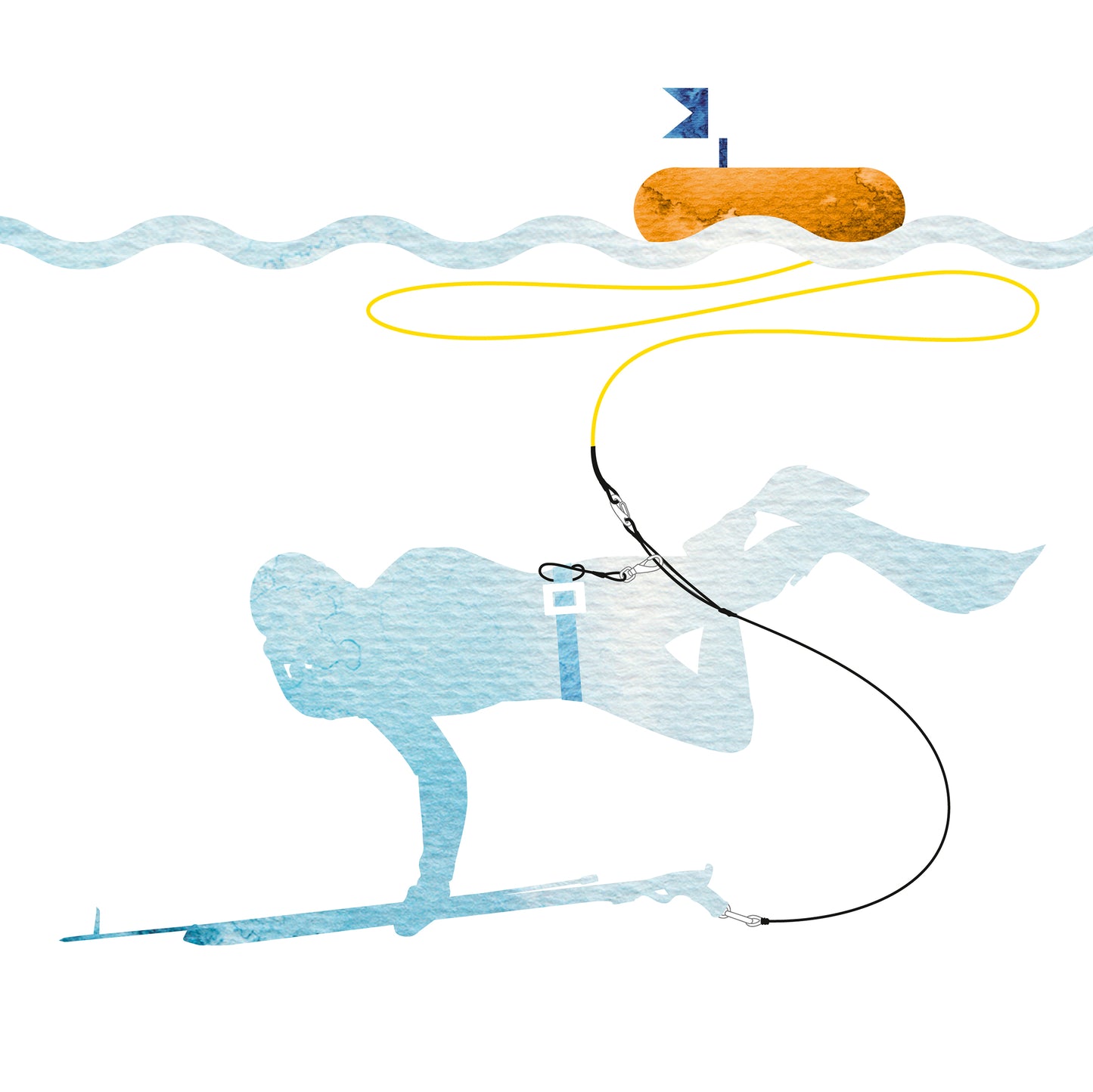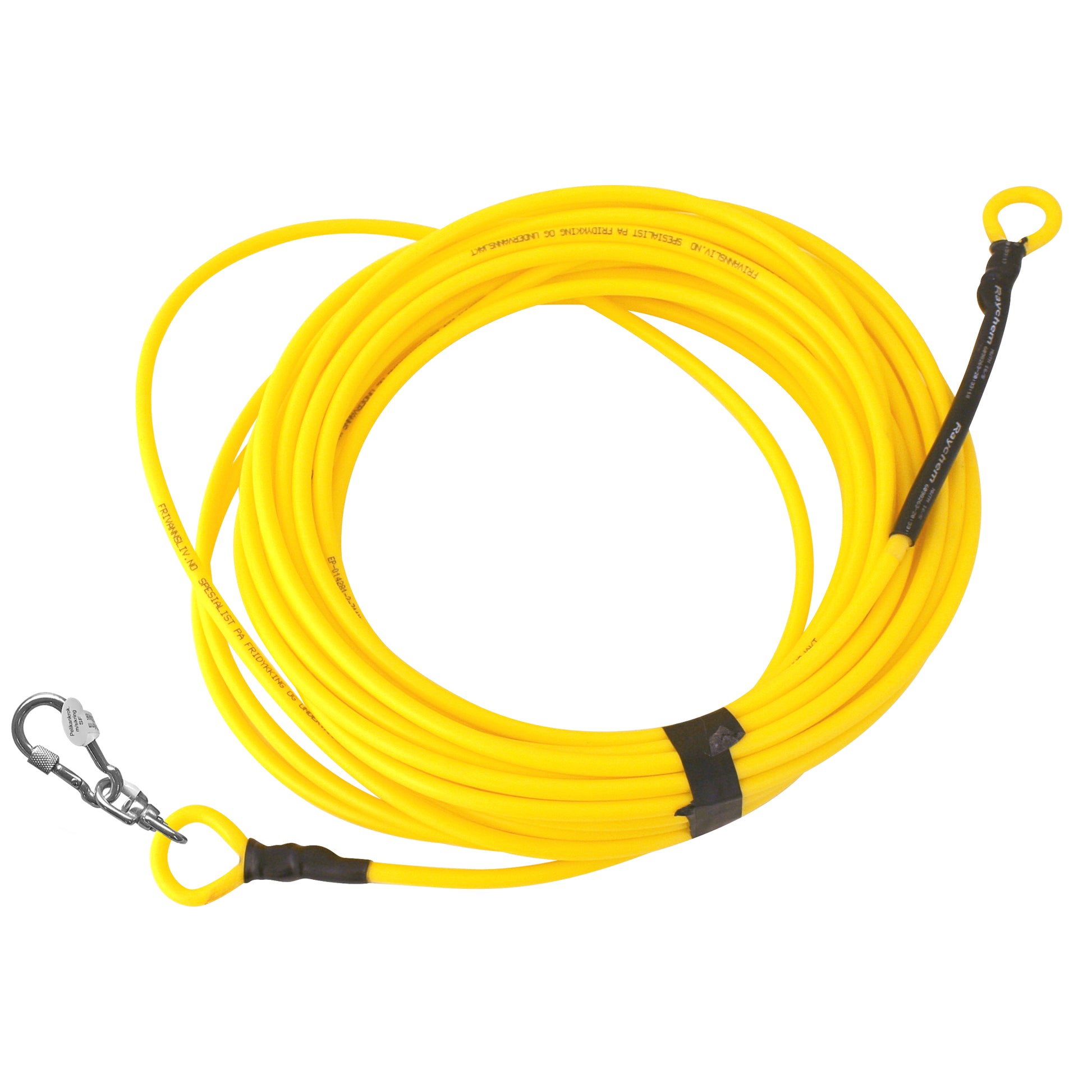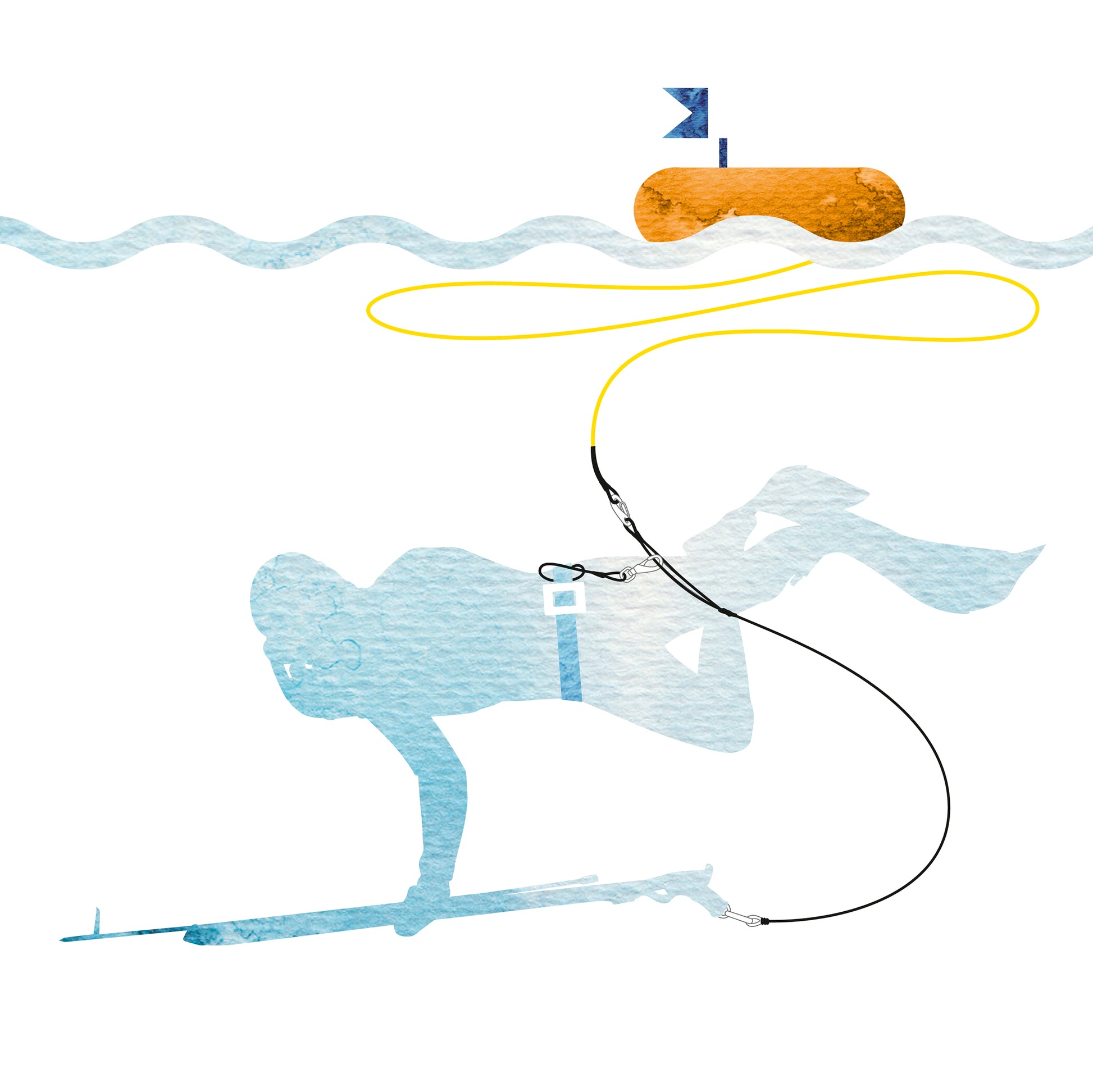Frivannsliv®
Frivannsliv® fishing and freediving line signal yellow
Frivannsliv® fishing and freediving line signal yellow
Couldn't load pickup availability
Line for freediving and underwater hunting, developed by Frivannsliv.
The line is highly visible on the surface and is stiffer and stronger than standard buoy lines, which makes them more comfortable to swim with without the risk of tangling. The line is supplied with a fishing stopper 2m from the buoy, this prevents the catch from sinking after it is threaded on the line and has slipped up past the fishing stopper.
Available lengths: 10 meters / 15 meters / 20 meters / 25 meters / 30 meters
• Is highly visible on the surface so that boaters see you more easily.
• Stiffer and thus even more comfortable to swim with without the risk of tangles.
• Thicker and with high friction against wet gloves
• Can be easily cut and spliced (melted at 250 degrees on a melting plate)
• Supplied with fishing stops 2 meters from the buoy. (Prevents the catch from sinking after it has slipped behind the fish stopper). See picture no. 5.
• If you are hunting large fish, or very deep, you can connect the belt hook directly to the yellow fishing line. You can then release the harpoon ettr harpooning, and both you and the harpoon will be free without having to reconnect.
For those who ask themselves, or others, how the fish react to the signal yellow colour. Here is a quote from Børje Møster in the freediving forum who helped ensure the quality of the line:
You don't have to go down that many meters before the yellow color disappears. Then the linen is more white. Whether yellow or white, it creates less contrast against the surface than black line. And it is usually against a bright surface that the fish see us. So in other words, the line provides more camouflage. And the opposite effect for boaters.
"Have tried everything between heaven and earth in the search for the perfect buoy line for the past 15 years. Everything from PVC hoses, silicone hoses with and without kevlar line inside. Various floating ropes from major manufacturers, e.g. Rob Allen. Ropes from car themes etc. thinking is that it costs a lot of money to buy a proper line and one therefore tries cheaper alternatives. Common to everything I have tried is poor buoyancy and low breaking strength compared to this one. Frivannsliv has developed this and therefore the price is high, but the quality is even higher . When I think about how much money has been spent trying all sorts of different things, the price is not that high after all. The product is superior in its class. Considering the lifespan of the flimsy silicone hoses I have used in the past, I expect to have this for many years to come."
Michael Byø
Technical specifications
Diameter: 7.5mm
Breaking strength: 130kg
Available lengths: 10 meters / 15 meters / 20 meters / 25 meters / 30 meters
Tip: Use the line together with a line harp
Buy the end piece for the harpoon separately if you are going to use the line for underwater hunting. Remember also a lanyard with a hook if you don't already have one.
The linen has been developed and produced in collaboration with Parmaplast AS, who are experts in plastic and linen production.
In the old days (the 90s), UV hunters in this country swam around with only the buoy connected to their belt, and the harpoon loose in their hand. Yes, believe it or not! This led to many small ugly situations. Think of the dive where the hunter catches a big fish in deep water, maybe it has been down for a while and wants to come up. The fish is not fatally shot and swims down, the UV hunter wants to go up but he does not want to lose either fish or harpoon. Although he should throw away the lead belt, he may push himself so hard that personal safety is compromised. In order to avoid such situations, we have developed better solutions in recent years.
On all buoys that are sold, it comes with a thin orange string. This is rubbish. A braided flag line etc. can be used, but it is best to use a good and well-thought-out fishing line. This consists of braided floating rope as a core, covered with smooth plastic that can withstand sunlight and frost. The line is stiff but flexible, so that it does not tangle.
The FVL Fangstlinen is a solution that goes from the buoy, via the lead belt and connected to the harpoon. You should buy a lashing line down the hook together with the fishing line. If you are going to connect the harpoon to the fishing line, you must also have an end piece for the harpoon.
The line that runs from the buoy to the belt is adapted to the maximum depth you wish to dive. For underwater hunting, four standard lengths are normally made; 10, 15, 20 and 30 metres.
The end of the fishing line has a stiffener, so that you can thread the fish onto the line as easily as possible. When you swim at the surface, the fish will float along the line to the buoy, and gather there. From the lead belt to the harpoon there is a short line of approx. 160 cm.
The system works so that when you catch a big fish in deep water, you can simply drop the harpoon, disconnect the fishing line from the lead belt and swim to the surface. On the way up, you can hold onto the line to give the fish a lift, and at the same time be connected like a dog on a running lead, with the hook that you have attached to the lead belt. On the surface, you pull up both line, harpoon and fishing line, and reconnect the fishing line.
During both ascent and surface swimming, you can just drop the harpoon and swim with your arms. Then the harpoon will hang just far enough behind you so you don't kick it with your fins.
The hooks used at this event are carefully adapted to the area of use and function they have. Some must be completely secure against loosening, while others must be very quick and easy to open.
The fishing line has been developed and improved over several years, and is a Norwegian invention. No one else uses exactly this arrangement that we have developed here at Frivannsliv. But in return, this is the arrangement that most UV hunters in this country now use.
The fishing line makes it much safer to hunt underwater, unlike "in the old days" when we swam around with loose harpoons. In other words, you don't run the risk of ending up in dangerous situations. If you run into problems of any kind, you can just drop the harpoon and drop the lead belt and you're completely free to shoot up to the surface like a cork. Both the harpoon and the lead belt are still connected, and can be pulled up afterwards.
The fishing line is UV-resistant (against sunlight), frost-proof and has great buoyancy. It is quite stiff and does not tangle easily. In Norway, we often dive in tidal currents, and here you can easily lose contact with harpooned fish if you use the super-elastic "bungie-lines", or harpoons with reels. So in our view, our fishing line is a much better, simpler and safer alternative.
The biggest advantages:
When you have to swim in strong currents or for long stretches, you just drop the harpoon which is trailed behind you, just far enough behind so that you don't kick it with your fins.
When you hunt, you avoid having the resistance from the buoy directly to the harpoon. The lead belt does this job.
If you catch a big fish in deep water, just drop the harpoon, connect the carabiner in the belt to the main line and swim up.
In cases where you become uncertain/scared, you also do not hesitate to drop the lead belt since this is constantly connected to the line.
Tip! If you hunt for large fish such as halibut etc., you use a diving raft, a diving kayak or connect three buoys together (instead of the one you usually use). When the fish is shot, it is the buoys that tire the fish and not you!
.
Share




